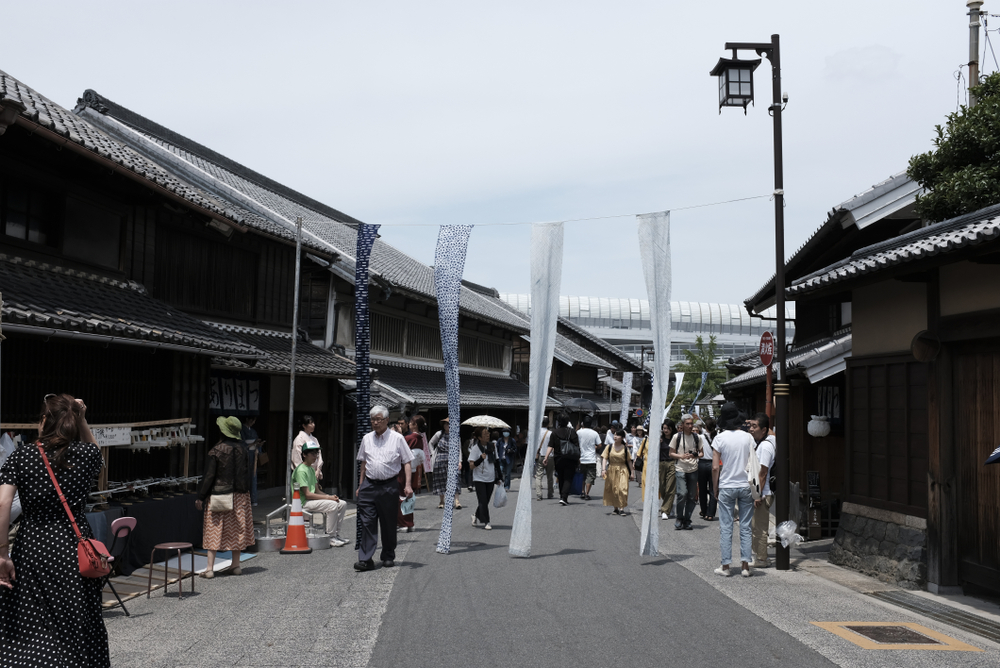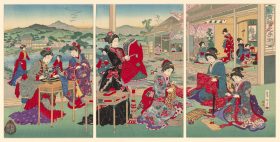In 2020, the 7th Yokohama Triennale featured a record number of Australian artists including Robert Andrew, Elena Knox, Make or Break (Rebecca Gallo and Connie Anthes) and Tina Havelock. This year, a collaborative work by Heather B Swann and Nonda Katsalidis is the first Australian work to be permanently installed on the art islands for the Setouchi Triennale.
Also in Japan, the upcoming Aichi Triennale 2022 includes five Australian artists (with strong First Nations voices) as well as Back to Back Theatre for the Performing Arts Program.
It’s not difficult to see the trend: Australian artists are making an impact in international shows that aim to capture the spirit of the Asia Pacific.
Mami Kataoka is the Artistic Director of this year’s Aichi Triennale, Director of Tokyo’s Mori Art Museum and the first Asian Artistic Director of the Biennale of Sydney in 2018. She told ArtsHub: ‘I have the impression that it took Australia a long time from when it regarded its identity in relation to Europe to starting to see itself as a member of the Asia Pacific community.
‘Australia’s art remains conscious of its history as a fairly new modern country, and it has managed to incubate a unique art scene that balances Indigenous art from thousands of years with contemporary art whose roots lie in Western modernity.’
Read: APT10 artists talk future
However, Kataoka highlighted that the Australian artists, including Hoda Afshar, Jacobus Capone, Mary Dhapalany, Yhonnie Scarce and Kaylene Whiskey, were selected for their acclaimed practices rather than to represent a national identity.
‘Just as it is difficult to pinpoint what “Japanese art” is, there are also myriad possible definitions of “Australian art”, continued Kataoka, adding that there will no doubt be differentiations in understanding ‘Australian art’ depending on whether one is seeing the work within or outside of Australia’s context.
What Indigenous artists bring to the Aichi Triennale
The inclusion of strong Indigenous voices is central to Kataoka’s vision of Aichi Triennale 2022, who experienced the way in which these artists work firsthand while travelling in Australia.
‘During my time at the Biennale of Sydney I also travelled to Alice Springs and to the desert areas of the Northern Territory. I had the chance to visit local art centres and see the environments in which Indigenous artists create their works,’ she told ArtsHub.
The experience is important in contributing towards the understanding of art in Australian and its local context. Kataoka added: ‘There are many talented artists in Australia. I think it is true for virtually any country that there are differences between artists who are popular abroad and those who found acclaim at home.
‘I believe that the international perspective is often likely to miss Australia’s complicated historical, cultural and social contexts, and so naturally the way that Australian art is perceived internationally will also be different.‘

However, connections to place and Country are themes which will resonate with audiences in Japan as Kataoka bring in Indigenous perspectives on a broader scale.
‘We have Indigenous artists participating not only from Australia but also from New Zealand, North America, South America and other places,’ she explained. ‘I have chosen to work with them because their cultural backgrounds – especially the respect for the ancestors of our earth and the deep reverence for Mother Nature – resonate with the history of pottery in Tokoname, one of the venues of the Aichi Triennale 2022.’
Kataoka added: ‘I also hope that the handicraft traditions that have been passed down within Indigenous communities and the cultural traditions inherited in venues like Arimatsu and Tokoname may foster new dialogues that transcend regional borders.’
A greater dialogue in the Asia Pacific
Apart from these recent appearances of Australian artists in Japan, there is also a long lineage of collaboration and artistic exchange that can be traced back decades.
Just some examples mentioned by Kataoka include Japanese sculptor Minami Tada’s participation in the inaugural Biennale of Sydney in 1973, QAGOMA’s Asia Pacific Triennial and its collection of contemporary Japanese art as well as the continuing participation of Australian artists in Japanese biennales and triennales since the 90s. In the craft and design world, these collaborations span back further from the 1960s.
Another recent example of this collaboration is the development of Sydney Modern, AGNSW’s major expansion project designed by Tokyo based architectural firm SANAA and headlined by commissions from Asia Pacific artists, due for completion later this year.

The growing awareness of artists and activities in Australia also signal a flux of influences within the Asia Pacific region as a whole, rather than a singled out occurrence between two countries, Australia and Japan. There have been changing attitudes on centring the region as its own hub of arts and culture, rather than trying to align it with America or Europe.
Japan, South Korea, China, Thailand, Indonesia and more are all buzzing with artistic endeavours focusing on initiating cross-cultural dialogue.
Kataoka added: ‘Thanks to the ongoing diversification of contemporary art and the growing number of exhibition spaces, there are more and more opportunities for engagement and exchange. I believe that by being more aware of collaboration within the Asia Pacific region in the future, we can weave new and alternative narratives together.‘





